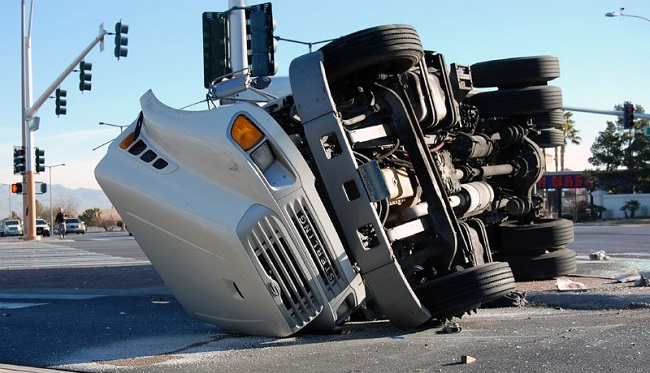A truck accident can change your life forever. All it takes is one wrong move, swerve, or poor decision and your life could be sent into a tailspin. Thankfully, there are plenty of ways to avoid these situations.
The Lowdown on Truck Accidents
When it comes to motor vehicle accidents, you might think there’s an even distribution of accidents by vehicle type. However, this isn’t entirely true. Large trucks account for just four percent of all registered vehicles on the road, yet are responsible for nine percent of all fatal crashes. And over the past decade, the number of fatal crashes involving large trucks has increased by 51 percent.
Fatal truck accidents are more likely to occur on rural roads than urban interstates. Likewise, daytime crashes happen twice as often as nighttime crashes. And while there’s a fairly even distribution throughout the year, deadly trucking accidents peak between May and October.
3 Tips for Preventing Truck Accidents
While truck drivers carry most of the blame for accidents, there are certain action steps that you – as the driver of a standard passenger vehicle – can take to reduce the likelihood of being involved in one of these catastrophic crashes. Here are some suggestions:
- Keep the Mirrors in Sight
One of the absolute worst things you can do is remain in a truck’s blind spot. Spending too long in a blind spot could leave you susceptible to a dangerous and deadly accident.
The trick to avoiding this scenario is to look at the truck’s side mirrors. If you can’t see the truck driver’s face in these mirrors, the truck driver can’t see you. While there are times when you have to enter into a blind spot – such as when passing – keep these moments as brief as possible.
- Allow Space
Always give trucks adequate space. You can’t trail a truck as closely as you would a normal car – particularly when traveling at high speeds on an interstate or highway. Generally speaking, you should avoid being in the general vicinity of a truck unless making a pass or you have no other option. Here are some reasons why:
- Sudden braking. Trucks can’t stop on a dime. Adequate spacing ensures that you’re able to properly brake and adjust should the truck slam on their brakes. (A failure to leave room could cause your vehicle to slide under the truck in an accident.)
- High winds. Wind isn’t a major factor for cars, but it can be for large trucks that have more surface area. In extreme situations, strong gusts can cause a truck to rollover. Proper spacing gives you a better opportunity for swerving out of the way and/or coming to a complete stop.
- Tire blowouts. Trucks experience blowouts all the time. When this happens, tire remnants (including massive treads) can tear off and hit your vehicle. Without proper spacing, this may cause an accident.
Spacing isn’t everything, but it dramatically reduces risk. Give plenty of margin for error and you’ll be much safer.
- Pass With Caution
There are times when it’s necessary to pass a truck – either on a single-lane highway or a multi-lane interstate. Regardless of whether you have a lane to pass in or you’re forced to overtake the truck by legally entering into the other lane, you must do so with caution.
Remember that trucks have large blind spots. Once you decide to make a pass, you must accelerate and avoid slowing down until you’ve made a complete pass.
“Another important thing to remember is that you should always pass trucks on their left,” 911 Driving School mentions. “The biggest blind spot for a semi driver is on the right of the truck. Chances of the driver not seeing you are increased if you are on that side of the truck.”
After completing the pass, never merge directly in front of the truck. You should leave a minimum of three car lengths between you and the truck. This provides adequate space should you have to brake suddenly. (Or should the truck accelerate.)
Stay Safe on the Road
It’s impossible to remove all risk as a driver. But as dangerous as trucks are, these practical and proactive steps will lower your likelihood of becoming a statistic. Apply them with purpose and stay safe!





